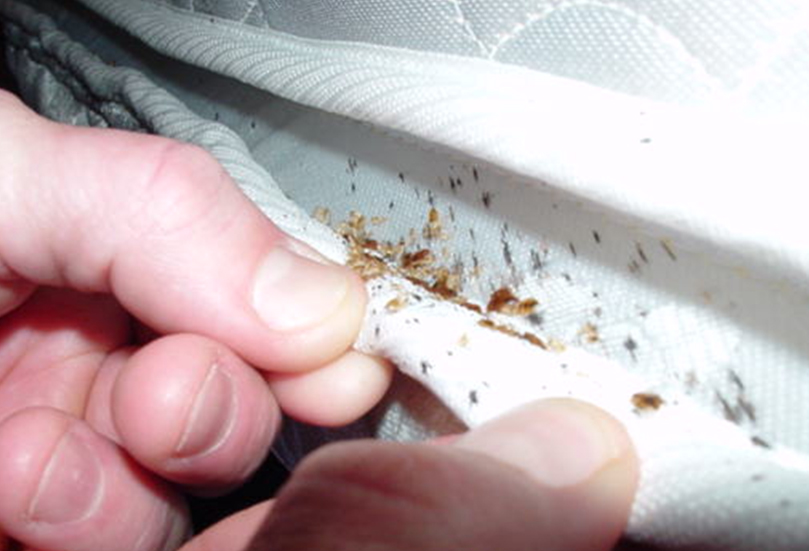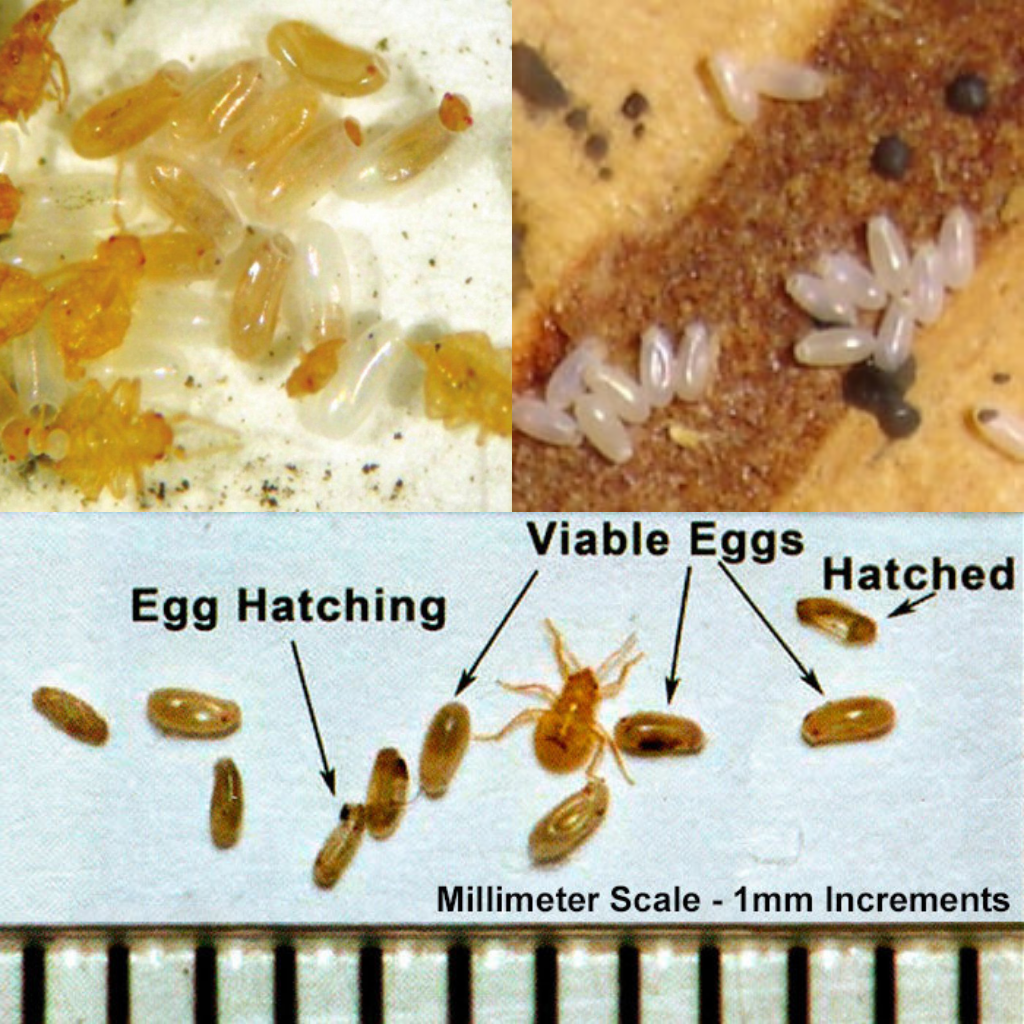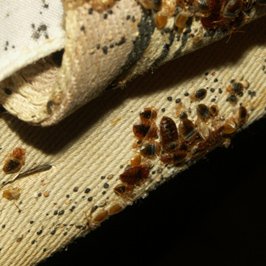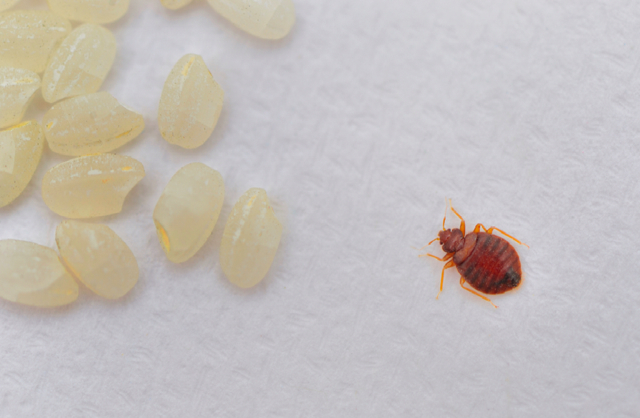Bed bugs are a common household pest that can cause significant stress and discomfort for homeowners. These tiny insects feed on human blood and can multiply rapidly, leading to a full-blown infestation if left untreated. One of the most critical aspects of bed bug control is understanding their life cycle, including the appearance and behavior of their eggs.
Bed bug eggs are small, white, and oval-shaped, and they are typically laid in clusters in secluded areas. They are often found in the cracks and crevices of furniture, bed frames, and baseboards, making them difficult to spot with the naked eye. However, identifying bed bug eggs is crucial for early detection and prevention of infestations.
In this article, we will provide a comprehensive guide to understanding the appearance of bed bug eggs, including their size, shape, color, and texture. We will also discuss the importance of early detection and the steps you can take to prevent and control bed bug infestations.
Table of Contents
ToggleBed Bug Eggs: An Overview
Bed bug eggs are small, white, and oval-shaped, typically measuring about 1 mm in length and 0.5 mm in width. They are often described as having a "banana" shape and are slightly curved. The eggs are covered in a sticky substance that allows them to adhere to surfaces, making them difficult to remove.
The color of bed bug eggs is white, which makes them challenging to spot against light-colored surfaces. They are also often found in clusters, which can make them even more difficult to identify.
Bed bug eggs are typically laid in secluded areas, such as the cracks and crevices of furniture, bed frames, and baseboards. They are also commonly found in the seams of mattresses and box springs. Bed bugs prefer to lay their eggs in areas that provide protection from disturbance and predators.
The texture of bed bug eggs is smooth and glossy, which can help distinguish them from other insect eggs. Bed bug eggs are also typically found in clusters, while other insect eggs are usually laid singly.
Understanding the appearance of bed bug eggs is crucial for early detection and prevention of infestations. By knowing what to look for, you can take action to eliminate bed bugs before they have a chance to multiply and spread throughout your home.
Identifying Bed Bug Eggs
Identifying bed bug eggs can be challenging, as they are small and often found in secluded areas. However, there are several steps you can take to increase your chances of detection.
Common Locations for Bed Bug Eggs:
Bed bugs prefer to lay their eggs in areas that provide protection from disturbance and predators. Some common locations for bed bug eggs include:
Comparison to Other Insect Eggs:
Bed bug eggs are often mistaken for other insect eggs, such as those of carpet beetles or cockroaches. However, there are some key differences that can help you distinguish bed bug eggs from other insect eggs.
Size: Bed bug eggs are typically smaller than other insect eggs.
Shape: Bed bug eggs are oval-shaped, while other insect eggs may be round or cylindrical.
Color: Bed bug eggs are white, while other insect eggs may be brown or yellow.
Texture: Bed bug eggs are smooth and glossy, while other insect eggs may be rough or matte.
Use of Magnification for Identification:
Magnification can be a helpful tool for identifying bed bug eggs. A magnifying glass or microscope can help you get a closer look at the eggs and their characteristics.
When using magnification, look for the following features:
By understanding the characteristics of bed bug eggs and the common locations where they are found, you can increase your chances of early detection and prevention of infestations.
The Importance of Early Detection
Early detection of bed bug eggs and infestations is crucial for effective control and prevention. By recognizing the signs early on, you can take swift action to address the issue before it escalates.
Risks Associated with Bed Bug Infestations:
Bed bug infestations can pose various risks to both your health and your home. Some of the risks associated with bed bugs include:
Skin irritation and allergic reactions from bed bug bites
Psychological distress and anxiety due to infestation
Damage to furniture, fabrics, and belongings
Risk of secondary infections from scratching bites
Benefits of Early Detection and Treatment:
Early detection of bed bug eggs and infestations offers several benefits, including:
Preventing the spread of bed bugs to other areas of your home
Minimizing the need for extensive and costly treatments
Reducing the risk of health issues associated with bed bug bites
Preserving the integrity of your home and belongings
Bed bugs Prevention and Control
Preventing and controlling bed bug infestations requires a proactive and multi-faceted approach. Here are some steps you can take to protect your home and family from bed bugs:
Steps to Prevent Bed Bug Infestations:
Inspect second-hand furniture and belongings for bed bugs before bringing them into your home.
Use protective encasements on mattresses and box springs to prevent bed bugs from hiding in them.
Seal cracks and crevices in furniture, bed frames, and baseboards to prevent bed bugs from hiding in them.
Use a bed bug-proof mattress cover to prevent bed bugs from entering or exiting your mattress.
Regularly inspect your home for signs of bed bugs, including their eggs, fecal matter, and shed skins.
Professional Pest Control Options:
If you suspect a bed bug infestation, it is essential to seek professional help. Professional pest control services can provide effective treatments to eliminate bed bugs and prevent future infestations.
Some professional pest control options include:
Heat Treatments: Heat treatments involve raising the temperature of the infested area to a level that kills bed bugs and their eggs.
Chemical Treatments: Chemical treatments involve the use of insecticides to kill bed bugs and their eggs.
Steam Treatments: Steam treatments involve the use of high-temperature steam to kill bed bugs and their eggs.
By combining preventative measures with professional pest control services, you can effectively protect your home and family from bed bugs and their eggs. Regular inspections and monitoring can also help you detect any signs of infestation early on, allowing for prompt treatment and prevention of further infestations.
Frequently Asked Questions (FAQ’S)
Q. What do bed bug eggs look like?
Bed bug eggs are small, white, and oval-shaped, typically measuring about 1 mm in length and 0.5 mm in width. They are often found in clusters in secluded areas, such as the cracks and crevices of furniture, bed frames, and baseboards.
Q. How long does it take for bed bug eggs to hatch?
Bed bug eggs typically hatch within 6-10 days, depending on the temperature and humidity levels.
Q. Can bed bug eggs survive without a host?
Yes, bed bug eggs can survive without a host for several months, making them a persistent threat to homeowners.
Q. How can I prevent bed bug infestations?
Preventative measures, such as inspecting second-hand furniture, sealing cracks and crevices, and using protective encasements, can help prevent bed bug infestations.
Q. What should I do if I suspect a bed bug infestation?
If you suspect a bed bug infestation, it is essential to seek professional help. Professional pest control services can provide effective treatments to eliminate bed bugs and prevent future infestations.
Q. Can bed bug eggs be killed with insecticides?
Yes, some insecticides can be effective in killing bed bug eggs, but it is essential to follow the manufacturer's instructions and seek professional advice for effective treatment.
Q. How can I tell if I have bed bugs or another pest?
Bed bugs have a distinct appearance and behavior, and professional pest control services can help identify and treat infestations of bed bugs and other pests.
Q. How much does bed bug treatment cost?
The cost of bed bug treatment varies depending on the severity of the infestation and the treatment method used. Professional pest control services can provide a customized treatment plan and cost estimate.
Q. Can I get rid of bed bugs on my own?
DIY bed bug treatments can be ineffective and may even worsen the infestation. It is recommended to seek professional help for effective bed bug control.
Conclusion
Bed bug eggs are a critical aspect of bed bug infestations, and understanding their appearance and behavior is crucial for effective prevention and control. By recognizing the signs of bed bug eggs and taking swift action, you can protect your home and family from the negative impacts of these pests.
Early detection and prevention are key to successful bed bug control. By staying vigilant and proactive in monitoring for bed bug eggs and signs of infestation, you can minimize the need for extensive and costly treatments.
Prevention measures, such as inspecting second-hand furniture, sealing cracks and crevices, and using protective encasements, can help prevent bed bug infestations. Professional pest control services can also provide effective treatments to eliminate bed bugs and prevent future infestations.






